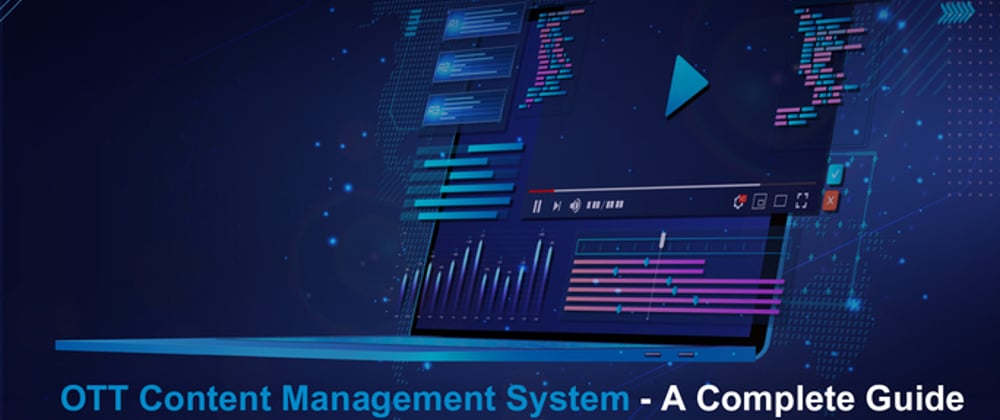The tools or processes needed to host, manage, and publish an online video are referred to as content management in the context of online video streaming.
As businesses grow and their digital asset collections grow, having a system in place to manage your video library becomes increasingly important. This is critical not only for cataloguing and indexing these files but also for managing the full video creation and distribution process.
Designating distinct responsibilities for authors, editors, publishers, administrators, and viewers, as well as giving appropriate access privileges to each, is an important part of an effective content management system. This type of production hierarchy involves review standards at each stage of the process, ensuring that any videos released to fulfil the organization's quality and consistency standards.
Many different organisations and enterprises rely on VOD content management in particular.
Consider how businesses create video presentations for shareholders or staff training materials, or how education or e-learning companies create content for their students.
What is an OTT content management system (CMS)?
A video content management system (CMS) is a tool that allows businesses to better organise, store, and distribute video materials. Video management technologies automate video processing by combining a single repository with specialised functionality for scheduling, publishing, and, in some cases, monetizing material.
Many businesses believe they can store internet video on their existing network servers and storage devices. However, because even relatively modest video files might surpass the constraints of typical file-sharing platforms, this method can bring a slew of issues.
In the unlikely event that these films pass muster, transmitting too much data at once can cause bandwidth issues.
Not to mention that in most business environments, consistent name practises are practically non-existent. As more movies are added to storage folders, searching for files becomes more difficult, and finding specific information inside each video becomes practically impossible.
To combat this issue, some businesses use social media platforms such as YouTube to host their video archives. While this appears to be the case, these consumer-grade platforms are not intended for serious broadcasters or corporate branding.
They not only offer significant security threats, but they also significantly restrict your content distribution and monetization possibilities. Especially when compared to enterprise-grade video management platforms built from the ground up with these scenarios in mind.
A competent video management software can help with this. To simplify operations, content management systems are frequently included in internet video streaming services.
To provide high-quality streaming and reliable content delivery, these platforms frequently collaborate with professional content delivery networks (CDNs). Sorting, classifying, and organising whole content libraries is simple with a professional-grade OTT CMS.
How does CMS work?
Users can format and store content in central repositories that can be readily searchable and shared online with the help of an OTT CMS.
Platform administrators can also allocate rights to groups or individuals based on their jobs, such as system administrators, operators, and subscribers. This gives you more control over who has access to what content and what they can do once they're connected. Automated publishing features are also included in content management systems, allowing subscribers and site visitors to get information on a regular basis.
The extremely collaborative nature of these systems is a big selling point for using an OTT CMS. Multiple team members can create, edit, and publish video material at the same time without generating bottlenecks or downtime for others.
Moreover, the majority of OTT CMS systems are cloud-based platforms that can be accessed directly through web browsers. As a result, team members and audience members can connect from anywhere using a variety of devices that are compatible.
Video management tools make it simple to organise video files by allowing non-technical users to create high-quality deliverables. The amount of IT employees needed for systems is reduced as a result of this ease of usage.
What to Look for in an Over-the-Top (OTT) Content Management System:
When you first start looking at video management tools, you'll likely be surprised at how many possibilities there are. While some systems are geared toward entry-level broadcasters, others are solely for huge corporations and enterprises.
The goal is to find the proper mix of functionality and security, as well as competitive pricing and customer service.
Video API access:
Organizations may simply integrate platform capabilities into a wide range of cloud video applications with video management solutions that offer video API access.
Both our video content management and video player APIs come with documentation, allowing developers to improve mobile live-streaming apps, add new features to existing networks, or create their own specialised video CMS systems.
Webnexs implementation contains a JSON Restful API that may be used with any programming language on a variety of server devices. Clients can choose to use Webnexs native video player or to use one of their own. SDKs are included to assist in the creation of unique mobile videos.
Uploading in Bulk:
Because many video CMS platforms only allow you to upload one file at a time, bulk upload solutions can save you a lot of time.
The Webnexs uploader supports FTP and Dropbox, as well as auto-pause and resume capability. This means you'll never have to worry about dropped wi-fi, faulty cell connections, or other signal interruptions interfering with your uploads.
Organizing the Video Library:
It's pointless to have a vast video material library if you don't know how to organise it. To further organise information, seek providers that offer categories and subcategories for cataloguing, tags for indexing, smart playlists, and video embedding.
Webnexs provides all of the aforementioned capabilities, as well as the third level of sub-categories and even mainland China shipping choices. These are features that aren't available on many other platforms.
Encoding of video:
It's critical to have multi-bitrate encoding and transcoding options for video distribution when hosting video content for global audiences. This entails making numerous copies of each video posted in a number of streaming formats (and quality levels).
Using video encoding guarantees that each viewer gets the highest quality and performance possible, independent of bandwidth, location, or device type.
Video Security and Privacy
It's critical to protect your content's security and privacy. This is where choosing an online video platform that takes video content security seriously pays off. Webnexs incorporates various essential elements, such as Digital Rights Management (DRM), to ensure the highest level of security.
We also provide secure file uploads via Dropbox, content limitation via IP, domain, and referrer, and password security for live streaming events.
Not to mention that all HTML5 video material is delivered over HTTPS for optimal browser compatibility.
Video Monetization is fully supported:
Advanced features are crucial, but in order for an OTT video technology company to succeed, it must generate revenue. Webnexs also has you covered with a full suite of tools and features to help you achieve your video monetization goals.
All major monetization models, including native advertising (AVOD), subscription-based (SVOD), and transactional or pay-per-view (TVOD) events and activities, are supported by our secure online platform. The SSL-enabled paywall from Webnexs supports over 135 different currencies and ten different languages.
For optimal monetization options, including value-added extras like coupon codes and bundled content packages.
Way Forward:
Organizations can securely manage their content libraries, grow distribution, and increase video monetization efforts with the proper video CMS. All while lowering administrative costs and enhancing audience satisfaction.
Our OTT CMS platform contains video and developer APIs, as well as a variety of monetization possibilities, and supports both live streaming and video on demand. With access to top-tier CDNs, ad-free white-label branding, and the industry's most competitive pricing.







Latest comments (4)
You did an excellent job! a comprehensive overview of OTT content management systems, as well as a referral to flicknexs, a white-label VOD platform.
Good job! complete guide on OTT content management system and also refer your flicknexs, which provides a white-label VOD platform
You have done an outstanding job of compiling this comprehensive reference on the OTT Content Management System.
Thanks for writing on this, krithiga.